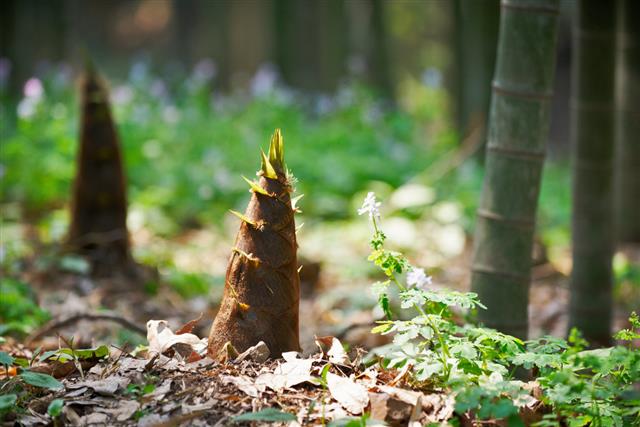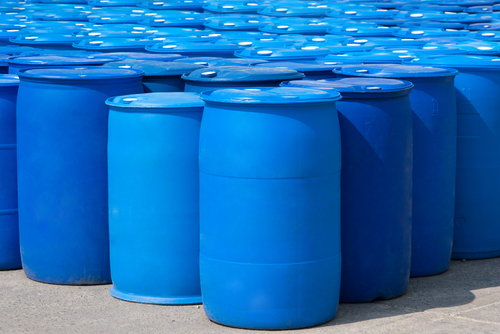Were you tired of bamboo overgrowth in your backyard or garden property? Looking for ways to control bamboo growth? Have you been frantically searching for “How to kill bamboo” without any luck? Here is the complete guide to bamboo growth control and killing bamboo plantation!
Bamboo is an evergreen flowering plant that grows throughout the year and is edible to humans and animals. It is a very low-maintenance crop, yet it provides a traditional vibe to the backyard or garden.
Bamboo is considered lucky in many ancient cultures and can be used in medicine to increase the landscape’s traditional aesthetic appeal. It is primarily known for its stiff stems used as a substitute for wood in furniture, flooring, flutes, fence posts, etc.
Bamboo can be grown in gardening pots, and water bowls as decorative desk items, glass vases as home accessory items, surrounding hot springs to provide sturdiness to the hot spring, and nutrient-rich water in backyards and gardens for boundary support and aesthetic value.
It is effortless to plant bamboo as it grows through vegetative reproduction quickly. While bamboo is a very beneficial crop, it propagates and spreads very fast. Although bamboo takes roughly three years to get fully established in a place, it is noted that some species of bamboo can grow as much as up to three feet per day.
Many cases have reported bamboo shoots have grown through concrete slabs and foundations for homes, causing much trouble for homeowners and farmers. Bamboo is known to attract insects like mosquitoes because they can lay their eggs in the hollow shoot. Hence it is essential to regularly change the water and take care of bamboo shoot infestations.
For such reasons, it becomes necessary to know methods to contain and kill bamboo if necessary. Removing bamboo can sometimes be a potentially hazardous task. It is tough to completely kill bamboo because even though the stems are hollow, they are robust and layered, which provides a sturdiness that maintains the shoot upright and continually growing.
Inexperienced people can sometimes underestimate the preservation techniques that bamboo has grown to adapt, including deep penetrating roots, stiff stems, and fast vegetative propagation techniques. Bamboo is known to attract insects like mosquitoes because they can lay their eggs in the hollow shoot. Hence it is essential to regularly change the water and take care of bamboo shoot infestations.
How to Kill Bamboo with Chemicals

The most famous and rigorous chemical that kills bamboo very quickly and in a short amount of time is Glyphosate. It is best to administer Glyphosate in spring, summer, or early fall. Many herbicides contain Glyphosate and are readily available in the market.
Glyphosate application for killing bamboo is pretty simple and easy. The leaves and stems are sprayed with the herbicide in late summer until they are wet. This makes the leaves turn yellow within a week, which is a sign of the plant dying.
Slowly the chemical will reach the lower parts of the plant, and the bamboo will be contained, and it will be killed off with just another treatment. If the shoots start to grow back within a year, the bamboo will need to be treated again.
Another way of killing bamboo with glyphosate is the Cut-stump application method. In this method, the bamboo is cut with loopers or saw as close to the ground as possible. Then the stumps are sprayed with the herbicide containing glyphosate.
You can also paint the stump to cover the top of it thoroughly to ensure proper application. This is said to kill the bamboo completely, and there should not be any re-growths. However, if the leaves start to grow again, more herbicides will need to be sprayed.
The only downside to chemical treatments to kill bamboo is that chemicals are harmful to the skin, animals, and the soil. Precautions and preventions need to be considered seriously when handling chemicals, and there are significant risks involved in using them.
How to Kill Bamboo Naturally

While chemical methods are quick and easy, natural methods of killing bamboo are safe and inexpensive! They do not harm wildlife and even humans, and some also help replenish the soil. Killing bamboo naturally from the landscape requires patience and perseverance.
It takes almost an entire year until the growth stops completely. There are several approaches on how to kill bamboo naturally. Some of the most commonly opted methods are given below:
Killing bamboo by Digging up Rhizomes
To kill bamboo efficiently, it is essential to understand the species of bamboo growing in the landscape. Some species of bamboo have a close network of rhizomes growing under the soil surface. These rhizomes are the primary source of bamboo propagation and need to be dug up carefully and precisely.
First, you need to prepare the soil by watering it around the bamboo crop. After this, a shovel needs to dig up the soil around the base clump of bamboo outgrowth to expose the roots. Once the bamboo plant roots are exposed, they can be manually removed by hand as much as possible.
The chances of the bamboo growing back are inversely proportional to the number of roots removed. As more and more roots are removed over a long period, the bamboo plants get weakened every time the process occurs. This helps in limiting and eventually eliminating the bamboo crop from the landscape.
Killing Bamboo by Moving the Lawn

Sometimes bamboo grows all over the lawn ad takes over the entire landscape design, disrespecting boundaries and fences. More often than not, it sneaks into neighbors’ areas and causes problems for them as well. In this case, digging might turn out to be a task that requires a lot of labor and time. Another option to contain the outgrowth is mowing the lawn over and over the bamboo crop when that is not possible. This is a comparatively repetitive but straightforward method.
With this method, the bamboo crop is not killed but only contained and prevented from growth. This will take a long time to recede bamboo growth, and even then, mowing does not ensure killing bamboo or preventing its lateral spread because the roots remain unaffected. This method can be just as mowing grass on the lawn.
Killing Bamboo with Salt

As we come to the main topic of discussion on how to kill bamboo with salt, it is to be noted that salt is a natural chemical and thus counts as a natural method of killing bamboo. The chemical composition of salt is Sodium chloride (NaCl), which is neutral.
This method is also useful in killing bamboo, but it requires a lot of repeated application and is sometimes inefficient depending on the variety of bamboo to be killed. For killing bamboo with salt, a concentrated aqueous solution or paste needs to be prepared and sprayed onto the leaves and stem of the bamboo crop after cutting the stems as close to the ground as possible.
It essentially works as a natural herbicide and can be used in place of glyphosate-containing herbicides. However, the salt application takes a long time, and it also degrades the soil quality by increasing salinity many folds in the soil.
Thus the soil loses its fertility, and agriculture becomes not feasible or possible on the piece of land for long durations afterward. This method is obsolete as it makes the land barren and is seldom opted for by people for their home yards and lawns.
Killing Bamboo with Vinegar
Vinegar works as a natural herbicide to kill unwanted bamboo growth. It has an acidic nature, and herbicides containing acetic acid or vinegar are more than 5% concentrated. This is very effective in killing bamboo plants in a short amount of time.
To use vinegar for killing bamboo, the plants need to be cut at the base, as close to the soil as possible, and then new shoots have to be allowed to grow. Once new shoots emerge, vinegar herbicides have to be sprayed on the plants. After two weeks, the leaves will start to wilt and turn yellow. At this point, the stalks need to be cut and re-sprayed with vinegar. This process has to be repeated as often as needed.
Conclusion
Bamboo can spread as fast as it grows, and mere fences or property lines cannot contain it. Bamboo is a healthy crop, and it can sometimes cut through concrete as well. While being beneficial and aesthetic, sometimes, it can force gardeners to search for techniques to effectively kill bamboo.
In most cases, it takes over a year to kill bamboo completely. There are both chemical and natural ways to kill bamboo based on preference. Glyphosate is a significant component in herbicides as it is the most effective bamboo-killer chemical in the market.
Apart from this, natural ways of killing bamboo include digging up rhizomes and moving the lawn to prevent bamboo growth. While these are brutal methods, spraying salt or vinegar is also a popular choice. However, salt is highly inefficient and depletes the soil of its natural nutrients. It increases salinity and is often very weak to kill established older growths.
Vinegar is the better choice to kill bamboo. In short, if you want to kill bamboo effectively using a natural method, search for how to kill bamboo with vinegar instead of killing bamboo with salt.












